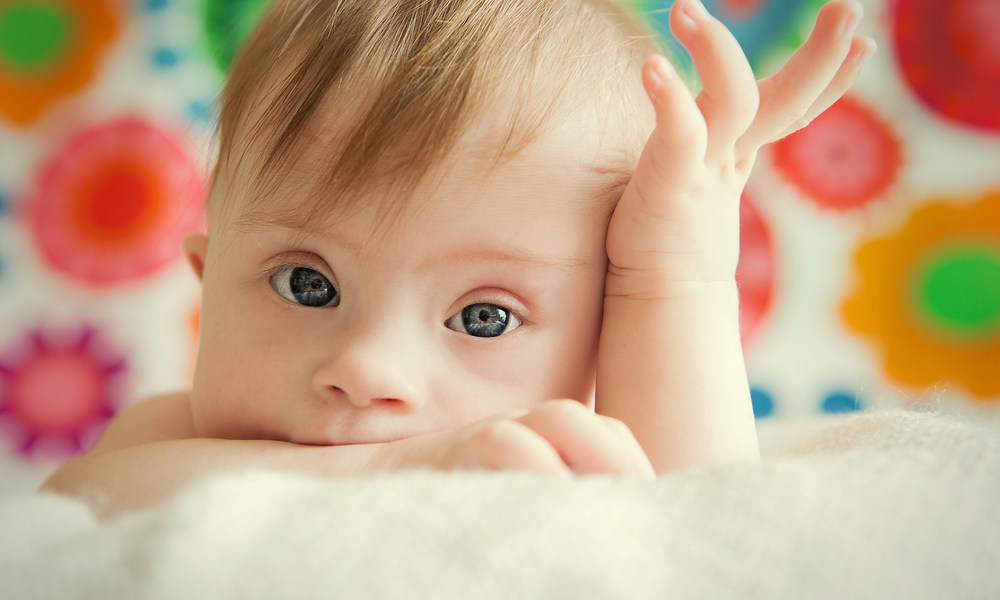Down syndrome is a genetic disorder and also most common autosomal chromosome abnormality in humans, where extra genetic material from chromosome 21 is transferred to a newly formed embryo. These extra genes and DNA cause changes in a development of the embryo and fetus resulting in physical and mental abnormalities.
Each patient is unique and there can be a great variability in the severity of symptoms. Many of the disabilities are lifelong and they can also shorten your life expectancy. However, people with Down syndrome can live healthy and also fulfilling lives.
Causes Of Down Syndrome
Recent medical advances, as well as cultural and institutional support for few people with Down syndrome and their families, provide many opportunities to help overcome challenges.Normally, each cell in the human body contains 23 pairs of chromosomes, which have the genetic material that determines all our inherited characteristics. All will receive half of each chromosome pair from their mother and the other half from their father. Individuals with the most common form of Down’s syndrome, trisomy 21, have an extra chromosome.
No one knows why exactly this chromosomal condition occurs, but it appears to be related to the age of the mother. The older a mother is when she gives birth, the higher the risk to her baby having Down’s syndrome. At 45, the risk is one in 30.
Children who are with Down’s syndrome are often identified at birth as a result of the few physical characteristics associated with the syndrome. Some children exhibit only a few characteristics, but others exhibit many. Because some of these features are also seen in people without Down’s syndrome, genetic testing must be done to confirm that diagnosis. The most common features associated with Down’s syndrome include:
- Flat facial features, with a small nose.
- Upward slant to the eyes.
- Small vertical skin folds on the inner corner of the eyes.
- Reduced muscle tone.
- Small, abnormally shaped ears.
- Single deep crease across the center of the palm.
- Hyperflexibility (excessive ability to extend joints).
- The flat back of the head.
- Short fingers.
- The enlarged tongue that tends to stick out.
Common Symptoms Of Down Syndrome:
- Short neck, with excess skin at the back of the neck.
- Flattened facial profile and nose.
- Decreased or poor muscle tone.
- Wide, short hands with short fingers.
- Small head, ears, and mouth.
- Upward slanting eyes, often with a skin fold that comes out from the upper eyelid and covers the inner corner of the eye.
- A single, deep, crease across the palm of the hand.
- A deep groove between the first and second toes.
- White spots on the colored part of the eye (called Brushfield spots).
In addition, physical development in children who are with Down syndrome is often slower than the development of your children without Down syndrome. For example, because of poor muscle tone, a child who is with Down syndrome may also be slow to learn to turn over, sit, stand, and walk.
Despite these delays, children who are suffering from Down syndrome can learn to participate in few physical exercise activities like other children. It may take children with Down syndrome longer than other children to reach the developmental milestones, but they will eventually meet many of these milestones.
Home treatments for Down Syndrome:
Walking and other motor development milestones:
You can help your baby or your young child strengthen muscles through directed play. As your child gets older, you can opt to work with a physical therapist and your doctor to design an exercise program by helping your child to maintain and increase muscle strength and physical skills.
Self-feeding:
Help your child to learn how to eat independently by sitting down together at meals. Use easy steps to teach your child how to eat. Start with allowing your child to eat with his or her fingers and offer them thick liquids to drink.
Dressing:
Teach your child how to dress herself or himself and take by taking extra time to explain and practice.
Communicating:
Simple measures, like looking at your baby while speaking or showing and naming objects, can also help your children learn to talk.
Grooming and hygiene:
Help your child to learn the importance of being clean and looking his or her best. Establish a daily routine for bathing and also getting ready. As your child gets older, this will become increasingly essential. Gradually add new tasks to the routine, such as putting on deodorant.
People who are suffering from Down syndrome are living longer and also richer lives than ever. Though they can often face a unique set of challenges, they can also overcome those obstacles in ways which inspire the rest of us. Building a strong support network of experienced professionals and understanding family and friends is essential for the success of people with Down syndrome and their families.

